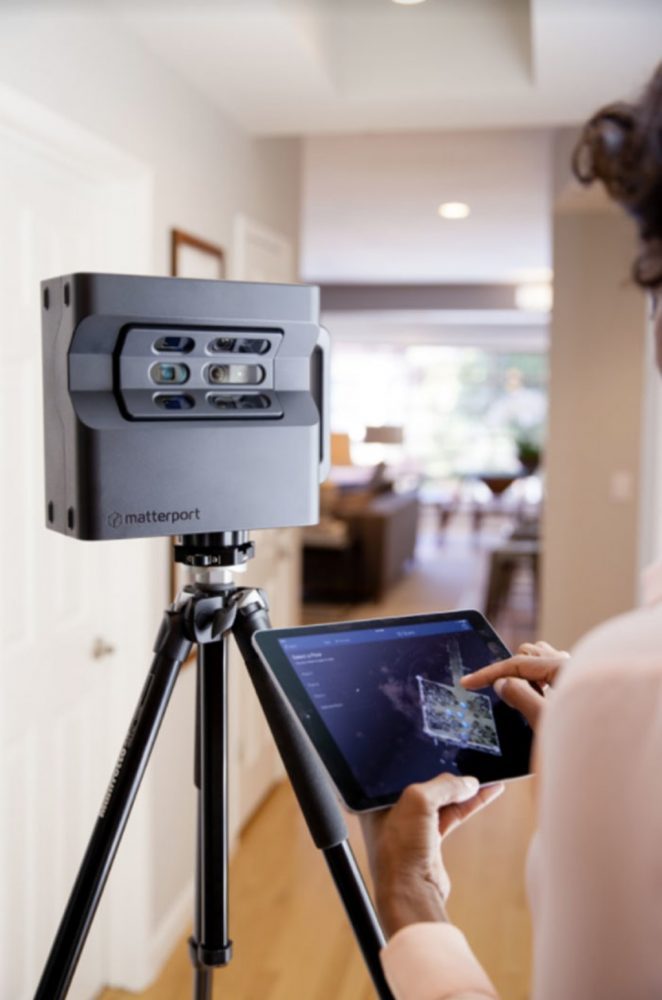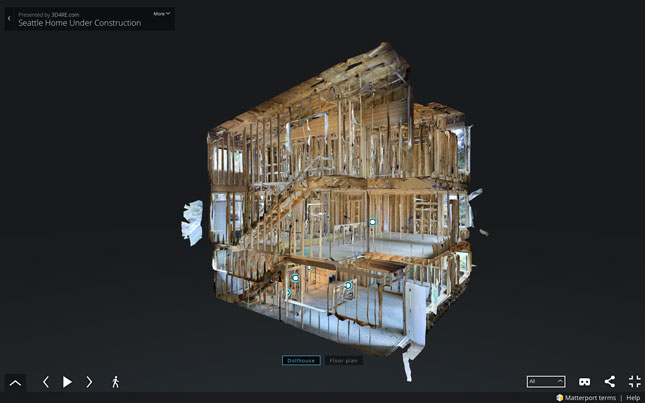
The process of drawing up architectural plans is in flux. For more than a decade, assorted software programs have attempted to bridge the gap between two and three dimensions by taking flat drawings or field data collected onsite and migrating them into modeling platforms, which create photorealistic renderings or 3-D virtual reality walkthroughs of a project. But what if the process began with what exists in three-dimensional time and space instead?
That’s a question 3-D media company Matterport has answered by creating what it calls True3DTM imaging of real-world environments using its proprietary platform, which includes its Pro2 3D camera and cloud-based services.
“What’s really happening in the industry is this shift and transition that’s been happening for a number of years from 2D to 3D,” noted Matterport’s Director of AEC, John Chwalibog. “That’s where everything has been going and continues to go with some of the augmented reality and virtual reality type technologies. It’s kind of taken 3D to another level of ‘actual 3D,’ or what we at Matterport call ‘True3D,’” he said. “So, instead of having rendered models of the design process, especially with existing spaces, why not start with the actual model of the space and use that as the backdrop to really drive and start that design process?”
How It Works
What makes the Matterport platform unique is its simplicity and efficiency. Scanning a room in 3-D previously required trained technicians and complicated software that took countless hours to capture and process. Matterport has simplified the experience by creating its Capture app for iPad that allows users to operate its 3-D camera with the push of a single button, which takes just 20 to 30 seconds per scan (total time to document an entire building depends on the size). Once the space has been captured, users can upload the data to Matterport, which processes and hosts the files for sharing within a matter of hours, Chwalibog says.
The Pro2 camera generates high-quality 4K, 2-D photography in addition to state-of-the-art 3-D and VR walkthroughs and floorplans all from one device. The software and cloud services work together to capture and automatically weave together thousands of digital 3-D images into an accurate, immersive photorealistic model that can be shared, annotated, and exported to a variety of tools such as Autodesk ReCap or Revit, improving efficiency and collaboration on the front-end of the project.
Additionally, Matterport adds value to the entire building lifecycle, including construction documentation and maintenance. Chwalibog notes that on the job site, project team members use the technology to record milestones, such as when structural steel, foundation work, rough walls, plumbing, mechanical, electrical, or plumbing are in place.

“What you end up with is a series of three-dimensional models of particular moments in time during that construction process, so it meets the needs of construction documentation to actually document what was built,” he said. “I can identify any changes from what was actually built versus the design intent, so now I can proactively make some decisions about how that’s going to impact the next milestone.”
Likewise, Chwalibog says the three-dimensional record of the project gives property owners much better intelligence about existing conditions which can prove invaluable years later if or when a renovation takes place.
